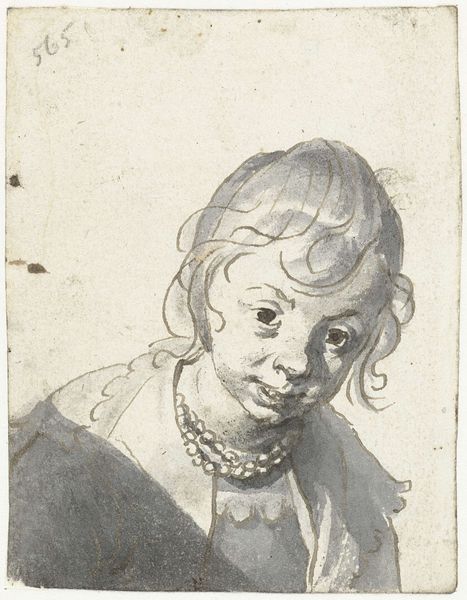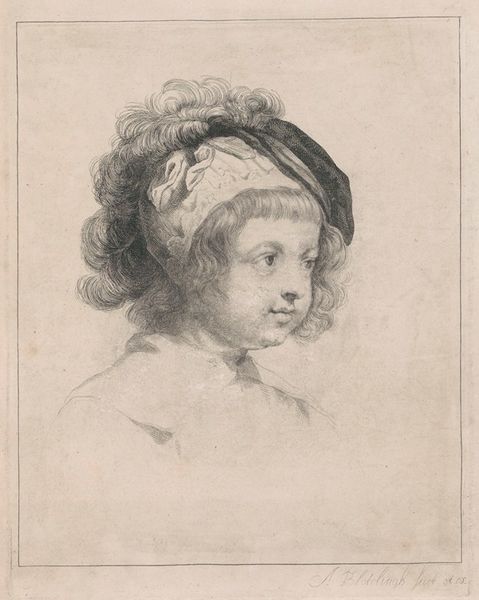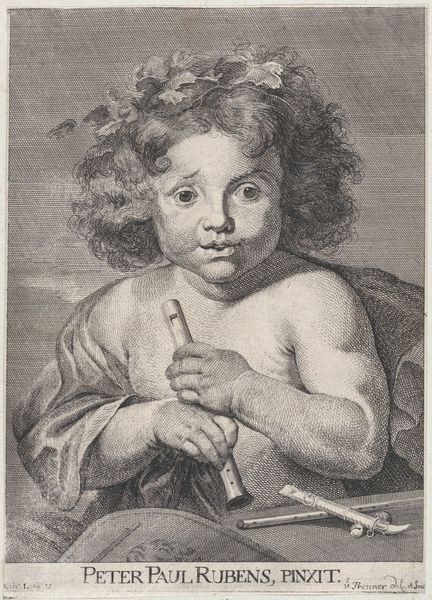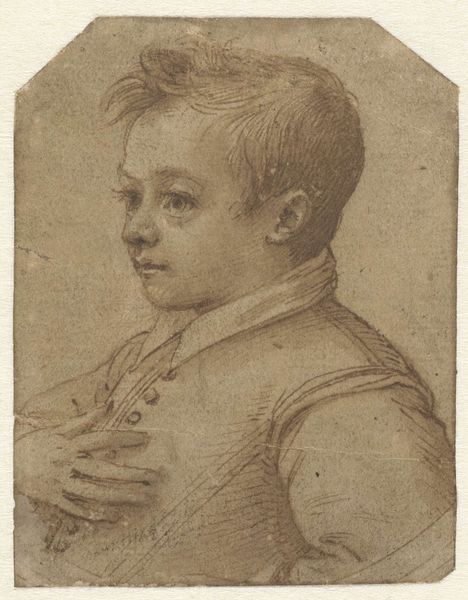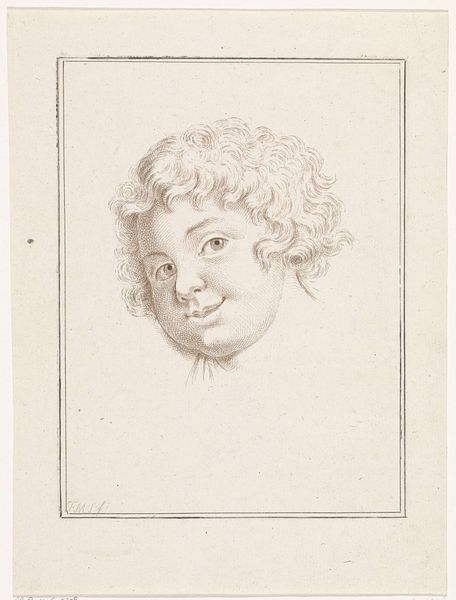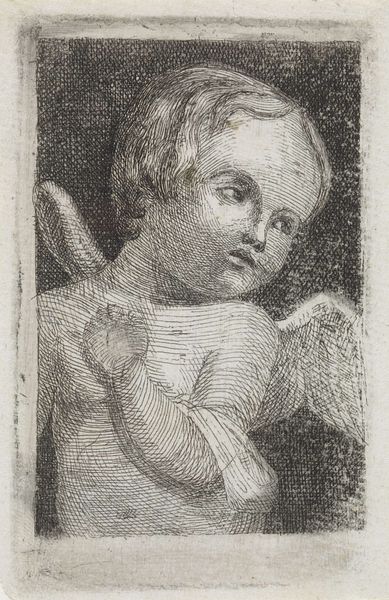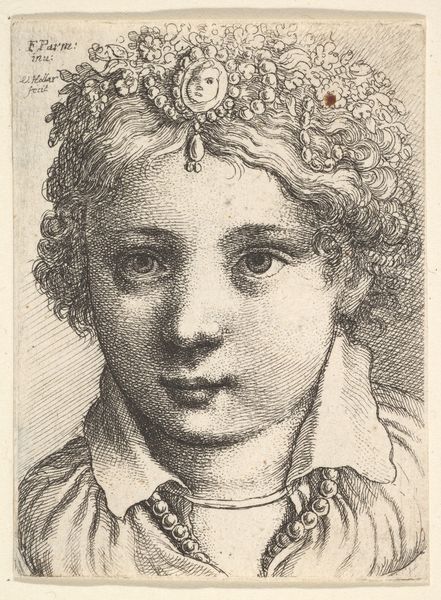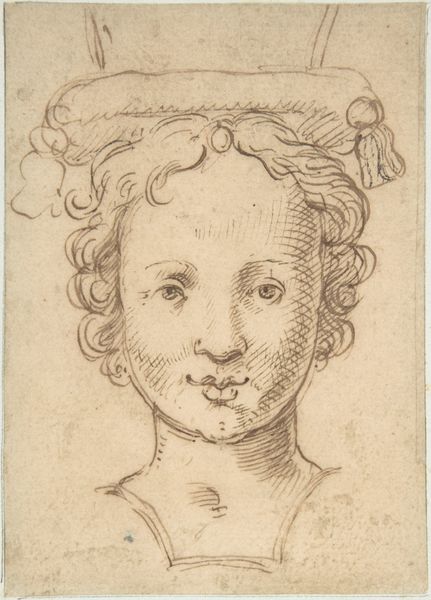
drawing, ink
#
portrait
#
drawing
#
dutch-golden-age
#
figuration
#
ink
Dimensions: height 127 mm, width 95 mm
Copyright: Rijks Museum: Open Domain
Gerard ter Borch the elder created this drawing, "Head of a Blond Child," with pen and brush in the Netherlands, sometime in the early to mid-17th century. In Dutch Golden Age painting, children were often depicted not just as cute figures, but as symbols of innocence, potential, or even as moral lessons. The child's delicate features and somewhat melancholic gaze may reflect prevailing attitudes towards childhood at the time, where children from wealthy families were portrayed as precious and vulnerable. The drawing’s delicate lines and limited color palette evoke a sense of intimacy. Paintings like this can be revealing if we consider period sources such as conduct books, which tell us a great deal about the expectations placed on children in 17th-century Dutch society. The Rijksmuseum's archives also provide insights into the collecting practices and the changing reception of such images over time.
Comments
No comments
Be the first to comment and join the conversation on the ultimate creative platform.
